This post explains how to fix the issue if the Universal Device Client Device is not working on your Windows 11/10 PC. A few users have reported an issue where they see an exclamation mark against the Universal Device Client Device entry in their Device Manager.
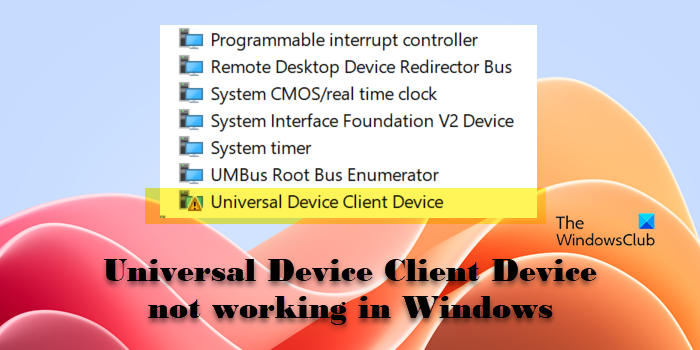
When they right-click to see device properties, the Device Status shows an error loading the driver. The complete error message reads:
This device is not working properly because Windows cannot load the drivers required for this device. (Code 31)
{Operation Failed}
The requested operation was unsuccessful.
If you’re facing the same issue, read this post to know the steps you may take to troubleshoot and fix the issue on your Windows 11/10 PC.
What is universal device client device driver?
The Universal Device Client (UDC) is an essential component of various Lenovo products, such as Lenovo Device Intelligence and Lenovo Device Manager. It aims to streamline device management and remote support for businesses that use Lenovo hardware across their infrastructure. For the UDC to communicate efficiently with the Windows operating system, the UDC device driver is installed on systems that come preloaded with these products. If the driver fails to load, users may encounter issues with their device’s operation or performance.
Universal Device Client Device not working in Windows 11
If the Universal Device Client device driver is not working on your Windows 11/10 PC, restart your computer and see if the UDC starts working again. A simple restart can sometimes resolve temporary issues with the software. If it doesn’t help, use the following solutions to troubleshoot the issue:
- Roll back driver
- Update driver
- Uninstall and reinstall the device driver
- Update Windows
- Run SFC scan
Let us see this in detail.
1] Roll back driver
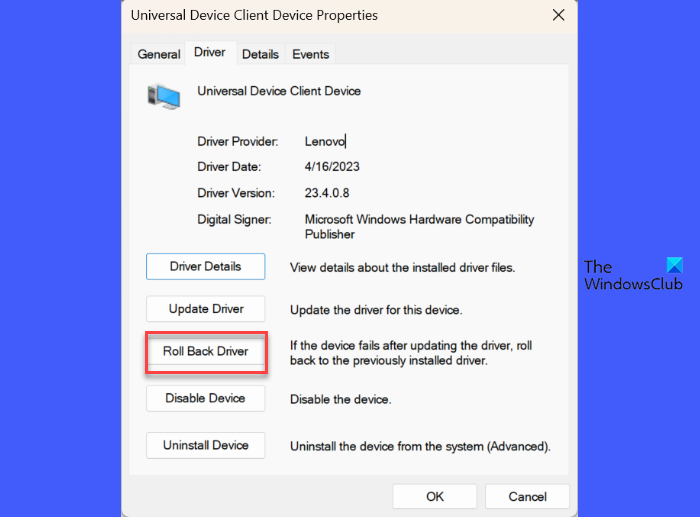
Rolling back the UDC Device driver has helped many users successfully resolve the issue. This will work best if the issue has appeared after recent updates to your Windows PC.
To roll back the driver to its previous version, follow these steps:
- Right-click on the Start button icon in your taskbar area and select Device Manager. The Device Manager window will appear on your screen.
- Scroll down to the System device section and click on it. The section will expand.
- Locate Universal Device Client Device in the list of available devices and right-click on it. Select Properties and go to the Driver tab within the Universal Device Client Device properties window.
- Click on the Roll Back Driver button and select Yes to confirm the roll back.
- Reboot your PC to apply the changes.
2] Update driver

If the roll back option is disabled, you may try updating the driver to the latest available version (or update it manually to an older version if you have a copy on it on your system).
To update the UDC Device driver, open the Device Manager window and select Properties from the right-click menu options of Universal Device Client Device.
Switch to the Driver tab in the Universal Device Client Device properties window, and click on Update driver.
The next window will show you options to ‘Search automatically for drivers’ or ‘Browse your computer for drivers’. If you choose to search for drivers automatically, Windows will attempt to find and install the necessary drivers. Alternatively, you may download and install the latest driver from Lenovo’s official website.
Choose the desired option and follow the on-screen instructions to update the driver. Once the update finishes, reboot your PC and see if the yellow triangle disappears.
3] Uninstall and reinstall the device driver
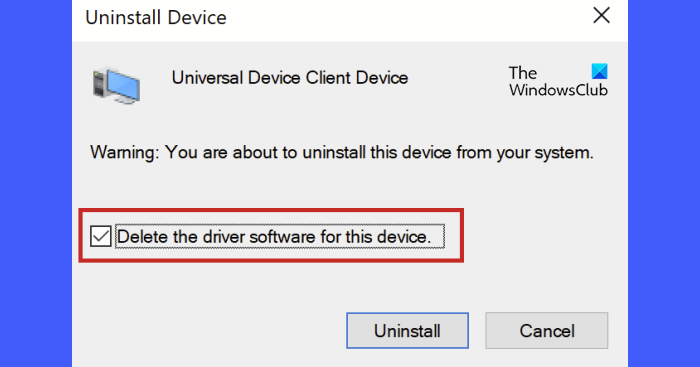
If rollback or update doesn’t work, uninstall the driver and reinstall it again. This will fix any corrupt or missing file issues by completely removing the current version of the UDC device driver from your Windows 11 PC.
To uninstall the driver, click on the Uninstall device button in the Universal Device Client Device properties window. Windows will automatically reinstall the driver on the next reboot.
4] Update Windows
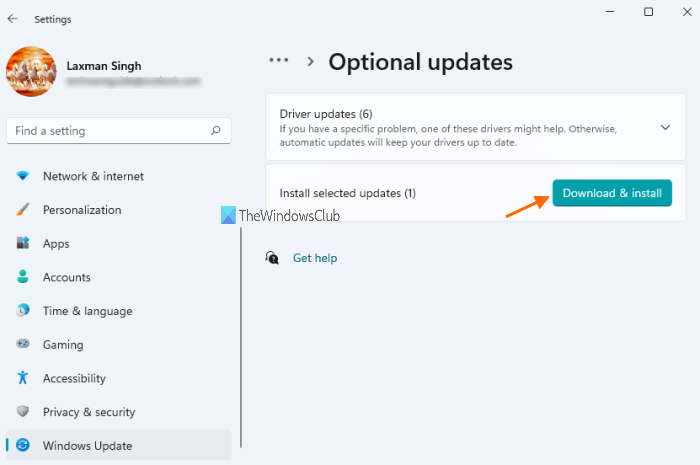
Make sure you have all the latest Windows updates installed on your PC. Driver updates sometimes appear as part of Windows Optional Updates. Ensuring that all the latest software patches and improvements are installed helps resolve driver issues on a Windows PC.
Type ‘updates’ in the Windows Search bar and click on Open next to the Check for updates option. Windows Settings will appear. Click on the Check for updates button. If Windows shows any available updates, download and install them on your Windows 11 PC.
5] Run SFC scan
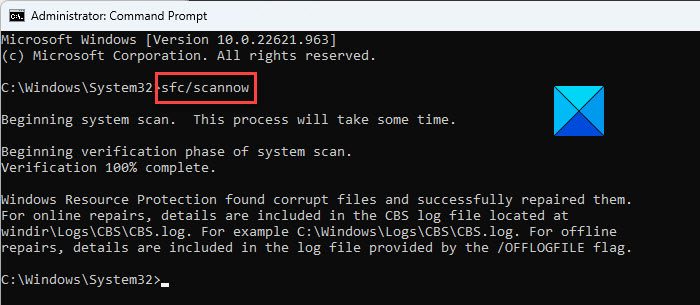
If nothing seems to help, run the System File Checker scan. If the issue is caused due to missing or corrupt system files, the scan will help identify them and fix them automatically.
You may also try reverting your PC to a previous state if you’ve created a system restore point before the occurrence of the issue.
I hope this helps.
Read: This device is not configured correctly (Code 1)
What is code 31 on Universal Device Client Device?
Error Code 31 is one of the several Device Manager Error Codes that could apply to a hardware device on a Windows computer. For the Universal Device Client device, encountering a Code 31 error means that there is an issue with its driver. It indicates that the device’s driver is either missing or corrupted. To fix the Code 31 error, you may try to roll back/update/reinstall the driver.
Read Next: A driver (service) for this device has been disabled (Code 32).
Leave a Reply